A Solano Descendant's Birthday is Today Guillermo Carlos Bouett (who is the author's father) was born on this day in 1915 on Avenue 32 in Los Angeles. His family soon moved to 427 Soiano Avenue in today's Solano Canyon, in a house that was built by Guillermo's grandmother, Maria Agustina Solano, in 1913. María is the daughter of Fransisco Solano, who founded what is now Solano Canyon in 1866, when he purchased 87 acres of land in the Stone Quarry Hills from the City of Los Angeles. María was born in 1861 and baptised in the Plaza Church downtown. In 1881, María married Guillermo Bouett, the namesake of the above-mentioned Guillermo Carlos, who was also baptized in the Plaza church. Guillermo Bouett is the son of French immigrant Jean Bouet. Guillermo Bouett became a Captain in the Los Angeles Sheriff's Department, and he lost his life in the line of duty in 1913, the same year that his widow built the house on Solano Avenue. He played baseball in Elysian Park with friends and attended the original Solano Avenue Elementary School. Today marks the 103rd anniversary of the birth of Guillermo Carlos Bouett. ¡Feliz Cumpliaños, Don Guillermo!
Today Is The Vote On The Fraudulent HCNC Subdivision Voting is always important. Today is the vote on the ill-conceived and completely fraudulent HCNC subdivision application. If you love Solano Canyon as I do, please vote in this election. The subdivision application is nothing more than a power-grab by Chinatown, whose victims will be Victor Heights, El Pueblo, and Solano Canyon. Please do not allow Angelica Lopez Moyez and her co-conspirator, Phyllis Ling, along with their collaborator, Mike Fong of DONE, to perpetrate this fraud. Mike Fong is guilty of dereliction of duty, denial of due process, and collusion by refusing to follow the established policies and procedures that he has sworn to uphold as a civil servant. Please Vote NO Today To Help Save Solano Canyon
There Has Been No Outreach For This Fraud The massive fraud that has been perpetrated on the residents of Victor Heights, El Pueblo, and Solano Canyon that is the HCNC subdivision application looks like it will continue right up to the equally-fraudulent election tomorrow. In this latest lie that has been told by Angelica Lopez Moyes, wherein she claimed falsely that her subdivision application had been endorsed by Cathedral High School, Martin Farfan, the President of Cathedral, refutes the lie in the following email: The woman who is doing all the leg work for the subdivision approached Br. John last week and asked to host a community meeting to give information before the election. The only two people who attended the meeting were Br. John and I. The short story is that we are not in support of the subdivision [emphasis added]. We informed her that in our opinion there was no outreach in our community prior to putting it on the ballot for this Thursday election. Cathedral has been in the Solano Canyon since 1925 and Br. John and I have been at Cathedral over 20 years and first heard about the subdivision last week. Hopefully the subdivision doesn't pass! [emphasis added] In other words, Angelica Lopez Moyes and her co-conspirators once again are telling a boldface lie. Asside from Brother John and the President of Cathedral, no one attended the meeting that Ms. Moyes claims is outreach. She apparently understands that, if she tells the same lie loudly enough and enough times, then perhaps enough people will believe it that her ill-conceived and entirely fraudulent HCNC subdivision application will pass. She can only hope to accomplish this fraud with the collusion of Mike Fong of DONE, and with the tacit approval of Carmen Hawkins, the Assistant City Attorney.
It is really worth reading about what a liar and a fraud Angelica Lopez Moyes really is here. The HCNC Subdivision Committee Conducted Zero Outreach Despite the fact that the 'Plan' that governs the formation of a neighborhood council requires that outreach be undertaken in order to "reflect the broadest array of Community Stakeholders who will actively participate in the proposed Neighborhood Council", the simple fact is that the HCNC subdivision committee undertook zero outreach anywhere but in Chinatown in its ill-conceived and fraudulent effort to concentrate political power in Chinatown at the expense of the surrounding residential neighborhood caucuses, including Victor Heights, El Pueblo, and Solano Canyon. Little Tokyo and the Arts District will simply be cast adrift if the subdivision proposal passes. Exactly two town halls were held — two A total of two town halls were held during this so-called outreach process. The first one was held 02 May 2018 at Maryknoll Japanese Catholic Center at 222 Hewitt Street on Los Angeles. Three people attended this meeting. Two of the three attendees were Angelica Lopez Moyes, the perpetrator of the fraudulent subdivision application, and Phyllis Ling, a co-conspirator of Ms. Moyes and recent Solano Canyon representative on the HCNC board (Ms. Ling, however, does not live in historic Solano Canyon; rather, she lives on Savoy Street, which aligns itself with Chinatown). The third person at this meeting was someone who attended so that attendance numbers could be determined. In any case, there was no sign-in sheet for attendees, as required by the Plan. This failure of process was confirmed by DONE as the result of a California Public Records Act request. The second town hall was held 23 May 2018 at Castellar Elementary School in Chinatown. There was no sign-in sheet for this meeting, either. There were perhaps twelve attendees at this second meeting, again including Ms. Moyes and Ms. Ling. Do two town halls attended by a total of 11 non-involved people constitute the required outreach effort to reach "the broadest array of community stakeholders"? Of course it doesn't constitute outreach — not even to the slightest extent. No outreach of any kind was ever conducted in Victor Heights, El Pueblo, or Solano Canyon, let alone the Arts District or Little Tokyo. It's time we stop dignifying the HCNC subdivision application by any name other than what it is: The HCNC subdivision application is a FRAUD The entire HCNC subdivision application is a fraud; Angelica Lopez Moyes is a fraud (and a cheat; you can read a third-party characterization of her bizarre behavior here); her recent co-conspirator, Phyllis Ling, is a gullible but apparently willing foot-soldier of Ms. Moyes, and by association, therefore, is a fraud; and Mike Fong, of DONE, who colluded with Ms. Moyes to push through the subdivision application from the beginning, is a fraud. But here is the scary part The election to certify this fraud is scheduled to be held Thursday, 07 June 2018. If only ten people vote 'Yes' in this election and that is a majority of the total votes cast, then the subdivision will pass. There is evidence that Don Toy, a resident of Chinatown, has organized a group of more than 200 of his loyal followers in preparation of the upcoming election. How has he instructed them to vote? What can one do to stop this fraud? The answer is simple: 'VOTE'. Vote 'NO' in greater numbers than there are 'YES' votes. If you love Solano Canyon as I do and want to protect it from a political power-grab by Chinatown, then talk with your friends and neighbors and get them to vote 'NO' on June 7th.
"Outreach, to god-damned hell with outreach! We have no outreach. In fact, we don't need outreach. I don't have to show you any stinking outreach, you god-damned cabrón and chinga tu madre!" Substitute the word 'badges' for 'outreach', and you have one of the most memorable quotes from the terrific 1927 novel by the enigmatic B. Traven, which was later made into the wonderful 1948 movie, both named The Treasure of the Sierra Madre. Well, the subdivision committee also says "No" to the stakeholder community of the HCNC — except for Chinatown, that is. And the point is, 'nothing' is exactly what the HCNC subdivision committee has done in terms of outreach. Outreach is required as a part of the process The "Plan For A Citywide System Of Neighborhood Councils" (known as 'The Plan'), which governs the formation of neighborhood councils, was approved 30 May 2001 and amended nine times, most recently 18 December 2013. Section III, Outreach reads: The outreach process used to identify stakeholders within the proposed Neighborhood Council boundary must be described in detail. In order to demonstrate a good faith effort towards achieving a diversity of stakeholder representation, an applicant(s) shall collect no less than 200 and no more than 500 signatures from stakeholders that have an interest within the proposed Neighborhood Council boundaries. Signatures shall, to the maximum extent feasible, reflect the broadest array of Community Stakeholders who will actively participate in the proposed Neighborhood Council. There are three distinct parts of the outreach requirement, none of which has been met by the subdivision committee. The essential elements of outreach are:
Make no mistake: Outreach has been virtually nonexistent The only stakeholders in which the Subdivision committee is interested are the businesses and organizations who are primarily related to Chinatown; residents, especially in Victor Heights and Solano Canyon, were simply not approached at all, and were largely ignored during the process. How many outreach town hall meetings were held? Two. The subdivision committee held exactly two town hall meetings to explain their ill-conceived and fraudulent subdivision application. The first meeting was held on 03 May 2018 at Maryknoll Japanese Catholic Church in the Arts district, one of the neighborhood caucuses that is slated to be cut apart from the HCNC if the subdivision passes. A person who was at the meeting said that there were exactly three persons who attended the meeting, including Angelica Lopez Moyes, the primary author of the fraudulent subdivision application. The second meeting was held at Castelar Elementary School in Chinatown, which is friendly territory for the subdivision application. A person who attended that meeting said that, at most, there were perhaps twelve people attending, also including Angelica Lopez Moyes. [A third-party description of Ms. Moyes' bizarre and erratic behavior may be found here.] At no time was there any attempt to have a town hall meeting in Victor Heights or Solano Canyon, and no resident of historic Solano Canyon reports that personal, door-to-door contact was made by anyone from the subdivision committee. In other words, the subdivision committee lied about outreach. Given the numerous flaws in the system, and abetted by DONE, the ill-conceived and fraudulent subdivision application has been pushed through to an election through collusion with DONE.
The HCNNC Formation Committee is desperate for you to believe the many lies they are telling about the HCNC subdivision application Make no mistake: the group that is promoting the subdivision of the Historic Cultural Neighborhood Council (HCHC) is desperate to consolidate political power in Chinatown. This effort is being spearheaded by Angelica Lopez Moyes (read more about Ms. Moyes here), although there is reason to believe that she is being controlled by others in this effort. The intent of the effort is to negate as much political power as possible in Victor Heights, El Pueblo de Los Angeles, and Solano Canyon and consolidate it in Chinatown. In the process, Little Tokyo and the Arts District will be cut away from the remainder of the subdivision and left to go their own way, even though those two caucuses will retain the name of the original neighborhood council (NC), which is (intentionally and confusingly) HCNC. It is important that everyone understands the extent of the lies that are being told by the subdivision committee about the current state of the HCNC as well as the level of support that actually exists — apart from Chinatown — for its ill-conceived and fraudulent effort. It is also important that everyone understands the extent of the collusion that exists between the subdivision committee and the Department of Neighborhood Empowerment, a City-chartered entity that is known by its acronym, DONE, particularly in the person of Mike Fong. Why the subdivision committee must lie about what they are attempting to do, because it's all about consolidating political power in Chinatown and away from the other caucuses (but they don't want you to know that) The subdivision committee does not have wide support among residents in the HCNC beyond Chinatown, which is being manipulated by only a few people. As an example, many residents of Cathay Manor signed in support of the proposed subdivision; yet, at a public meeting held by the Board of Neighborhood Commissioners (BONC) on Monday, 12 May 2018, Don Toy, HCNC board member as Resident from Victor Heights stated on the record that many of those Cathay Manor residents signed in support of the subdivision not only without their knowing what they were signing, but because they had been told to do so (presumably by him or his underlings). This is not a matter of opinion; Don Toy spoke on the record. The reason that so many Cathay Manor residents did not know what they were signing is that many of them speak only Chinese, and the subdivision application was written in English and never translated into any other language. Any criticism of the subdivision process is characterized as 'misinformation'. The subdivision committee would have you believe that they, alone, know what is best for all stakeholders in the HCNC. Their characterization of the HCNC in general, and of the Solano Canyon caucus in particular, is that those in opposition are not in step with the times; it is only they who are in a position to dictate what 'in step' means. Here is an example of the subdivision committee's tactic of obfuscation: As with other campaigns, not everyone agrees. Groups and corporations that oppose the subdivision proposal, and claim to speak for entire communities such as Solano Canyon, do so while ignoring the petition signatories [sic] and letters of support from both Solano Canyon groups and residents. It is true; not everyone agrees, much to the dismay of the subdivision committee. There are several perversions of the truth in this statement, however. First, no one is presuming to speak for an entire community, such as Solano Canyon. And the notion that anyone who opposes the ill-conceived and fraudulent subdivision application is ignoring the implied 'many signatures of support as well as letters of support' is frivolous and ludicrous on its face. The fact is that, in the entire historic Solano Canyon community — which is not the same as the area within the Solano Canyon boundary as defined by the HCNC — there were exactly two signatures of support from residents, one of which was subsequently rescinded. As for letters of support, in order to make that point, the subdivision committee has had to resort to utter falsehood. The committee claimed, for example, that Cathedral supported the subdivision proposal. The fact is that, while the subdivision committee scheduled a meeting with Cathedral, the President of Cathedral said in an email that no such support was extant. Another word for a falsehood such as this is a lie. This is another point that must be clarified: Stakeholders of neighborhood councils include not only residents, but also business owners, employees, property owners, and organization members. All voices should be valued, not one over the other. That statement is correct on its face. The problem is that the subdivision committee made the conscious decision to rely primarily on the 'business owners, employees, property owners, and organization members' almost entirely, because they knew that, except for Chinatown residents, they would not, for the most part, be able to convince residents of other neighborhood caucuses to join their cause. As a result, there are clusters of signatures of support from businesses and organizations, but few from actual residents. The subdivision committee likes to point to 'signatures of support from Solano'. This is a red herring. The historic Solano Canyon community in no way matches the HCNC boundary that is labeled 'Solano Canyon'. For the subdivision committee to assert that there is substantial support from Solano Canyon residents is disingenuous at best; they will not admit that the residential community that is the historic Solano Canyon has been neither the recipient of outreach nor the source of broad-based support. Many of the signature that are referred to come from addresses on Cottage Home or Savoy Street — an area that is not, and never has been, a part of historic Solano Canyon. All ellegations of fraud have been investigated by DONE and found to be without merit. This statement requires clarification. The fact is that the allegations of fraud describe actions on the part of the subdivision committee that have routinely been accommodated or facilitated by DONE; in other words, the fraud has been perpetrated by the subdivision committee and DONE, in collusion with each other. DONE is part-and-parcel of the fraud. To suggest that DONE should be the entity to investigate such allegations of fraud is a bit like saying that the fox should be let loose in the hen house to discover whether anything is wrong. That statement by the subdivision committee is absurd on its face. The concept of Chinatown forming its own neighborhood council has been promoted by those in opposition. We have never shared that opinion, and neither have our supporters as a whole — including business owners and community leaders from El Pueblo, Victor Heights, and Solano Canyon. This incredible statement must be called out for what it is: a lie. Ms. Moyes, the primary architect (at least, on the surface) of the subdivision committee, explicitly stated that the intent of the subdivision was exactly to form an independent Chinatown NC. Although it is difficult to read, take a look at this published statement by Ms. Moyes: This is the text of the above image, transcribed for clarity: CHINATOWN AS A NEIGHBORHOOD COUNCIL "With the City of Los Angeles Department of Neighborhood Empowerment (DONE) now accepting subdivision petitions for Neighborhood Councils, a group has gathered in Chinatown to organize a campaign to separate from the Historic Cultural Neighborhood Council (HCNC), and form its own Council [emphasis added]. HCNC currently includes Chinatown, Little Tokyo, Arts District, El Pueblo, Chinatown [mentioned twice], Solano Canyon and Victor Heights. Petitioners advocate that local neighborhoods have their own unique cultural and socioeconomic needs, and would be better served by a more specific council. The application is due 1/15. For more info email [email protected]." Can there be any interpretation of the above statement other than it is the clear original intent of the subdivision committee, headed by Ms. Moyes, to create a stand-alone NC for Chinatown? Why does Ms. Moyes find it necessary to lie about this when it is so obvious? The proposed bylaws of the subdivision committee have been gerrymandered to concentrate as much political power as possible in Chinatown and away from other caucuses. Ms. Moyes freely admitted in an email to Mike Fong, her co-conspirator at DONE, that she altered the bylaws for the proposed subdivision. Interestingly, there are now two versions of the proposed bylaws: one of the official City website and another that Ms. Moyes now professes to be the bylaws that she wants to be adopted. The difference is a section that was added by Ms. Moyes that effectively limits the HCNC board members who may serve on a new board if the subdivision application were to pass. Among the HCNC board members who will become ineligible for the new board is Don Toy, a polarizing figure in Chinatown whose elimination from the new board Ms. Moyes has used to her advantage in her effort to secure support from Chinatown ('Don Toy will not be able to be on the new board'). The outreach that was conducted by the subdivision committee is a complete fraud The subdivision committee claims that: We have conducted outreach throughout the existing neighborhood council in numerous way including going door-to-door and participating in community meetings. Once again, it is necessary to expose this lie for what it is. No one in Solano Canyon has come forward to say that anyone from the subdivision committee visited their door; and one 'community meeting' that was posited for the Los Angeles Theatre Academy (LATA), a partnership with the Department of Recreation and Parks located at 929 Academy Road in Solano Canyon, simply did not hapen. The artistic director of LATA is Alejandra Flores. You can read her letter refuting the subdivision committee's lie here. The subdivision committee claimed in its application that 'Posting Site #4' was at LATA. The letter of rebuttal is scathing in its denunciation of this lie. This information is blatantly and patently false ... since there was never any contact made at LATA by anyone who represented him- or herself as a representative of the subdivision formation committee. One must ask: why has the subdivision committee found it necessary to lie to blatantly and so often about its activities? Ms. Moyes and her ilk appear to be desperate to ram this ill-conceived and fraudulent subdivision application through the process, with the collusion and support of DONE. Finally, the subdivision committee distorts the truth with this statement: The formation committee has been extremely forthcoming, including in our response to Public Records Act requests for all communication with DONE staff, going above what was legally required, in the interest of transparency. Here are the facts: the author has made multiple California Public Records Act requests (CA PRA requests) for information that include correspondence between Ms. Moyes and various agencies, including DONE, BONC, the HCNC, the Echo Park Neighborhood Council (EPNC), and between Ms. Moyes and numerous individuals who serve in official capacities. On more than one occasion, Ms. Moyes' response has been that she is under no legal obligation to disclose anything she has written unless it was in her capacity as a board member of the HCNC. Ms. Moyes, of course, is completely wrong on this point. Ms. Moyes is obligated, under the CA PRA, to reveal any and all correspondence of which she is the author, in any capacity, with any entity that is subject to the CA PRA. But we should, by now, be cognizant of the fact that Ms. Moyes' goal is not to be forthcoming, but rather to obfuscate, obscure, distort the facts, and outright lie to secure the passage of her ill-conceived and altogether fraudulent subdivision application. The ill-conceived and fraudulent HCNC subdivision application must not pass; rather, it should be rejected altogether by the City Council.
This blog is about the ill-conceived and fraudulent application by Angelica Lopez Moyes and her Historical Cultural North Neighborhood Council Formation Committee (HCNNCFC) to subdivide the Historic Cultural Neighborhood Council (HCNC). Yes, the name is confusing and deliberately so, so as to divert attention from the unethical and underhanded actions taken by the formation committee in its attempt to push an incomplete and fraudulent subdivision application through the process. DONE fails, but no one cares, not even the City's lawyers ... The Department of Neighborhood Empowerment, commonly referred to by its acronym, DONE, is a City-chartered entity. Employees of DONE are public servants who are required by statute to follow the rules and procedures that have been established for them. The application for subdivision of a neighborhood council (NC) is governed by the "Plan for a Citywide System of Neighborhood Councils (Plan).” Article III, §2 of the above-named 'Plan' states, in part, If, at any time during the processes described in this section, DONE determines that an application is incomplete, it shall return the application to the applicants along with a detailed list in writing of the missing components required in a certification application and suggestions on how to incorporate missing components. Applicants whose certification application was determined to be incomplete and returned by DONE may at any time re-submit the application after amending it to meet all the necessary criteria [Emphasis added]. One of the tools that are available to everyone is the California Public Records Act (CA PRA). Requests made under the PRA provide archived public records available for review. In this case, a PRA request was made to DONE to try to determine whether the rules specified by the Plan were being followed. The subdivision application of the HCNNCFC was woefully-incomplete as of the deadline date of 15 January 2018: the minimum number of signatures of HCNC stakeholders, 200, was not met; the application was replete with half-truths, distortions of the truth, and outright lies; and there was little-to-no outreach to stakeholders in neighborhood caucuses — especially in Victor Heights and Solano Canyon — because the formation committee knew that there was little support in these neighborhood caucuses for its effort to perpetuate its fraud. In fact, there was but a single signature of support from Solano Canyon. Dereliction of Duty and Collusion by a City entity Response to the above-referenced CA PRA request demonstrated that, at no time, was the required notification made by DONE. The application was never returned to the formation committee and no letter was written that specified the missing components of the application. Rather, the PRA request revealed that email communication between Ms. Moyes and Mike Fong, Director of Policy and Government Relations for DONE, demonstrated clearly that the pair — Ms. Moyes and Mr. Fong — were communicating 'behind closed doors'; in other words, Mr. Fong — who has political aspirations — was 'working the system' to ensure that Ms. Moyes' subdivision application would be approved. This is a clear dereliction of duty on the part of Mr. Fong. The fact that Mr. Fong and Ms. Moyes were communicating behind closed doors is a demonstration that there was substantial collusion going on between DONE and the formation committee. The City Attorney's office fails to act The office of the Los Angeles City Attorney has a division consisting of Deputy City Attorneys whose job it is to advise neighborhood councils. Headed by Supervising Deputy Attorney Darren Martinez, the Deputy City Attorney whose area includes the HCNC is Carmen Hawkins. Numerous emails were sent to Ms. Hawkins, calling her attention to, and documenting, the numerous breakdowns in the system (the 'Plan') on the part of DONE, especially by Mr. Fong; yet at no time does it appear that the City Attorney's office made any effort to advise DONE on proper procedure or to chastise anyone at DONE for failure to follow procedure. On the contrary: it appears instead that the City Attorney's office was happy to 'turn its head' and allow DONE to run roughshod over the process. The City's neighborhood council system is badly broken It will not be possible to fix the broken neighborhood council system in one fell swoop; but is it not reasonable to expect that, bit by bit, the system will be repaired, and that the players, working in the various City-chartered entities, will do their jobs as public servants and at least give the appearance that they care?
Apparently not. The HCNC subdivision application is a fraud A blog dated 4/20/2018 (read it here) detailed the many inconsistencies and outright lies connected to the fraudulent neighborhood council subdivision application of the Historic Cultural North Neighborhood Council Formation Committee (HCNNCFC). Make no mistake: the primary purpose of this travesty is to consolidate political power in Chinatown at the expense of the stakeholder caucuses of Victor Heights, El Pueblo de Los Angeles, and Solano Canyon. The Arts District and Little Tokyo, stakeholder caucuses that are presently members of the Historic Cultural Neighborhood Council (HCNC), were deliberately cut out of the HCNC by the HCNNC subdivision proposal; the result is that they will be isolated and left to fend for themselves. The HCNNCFC staged a so-called 'press conference' at 11:30 a.m. yesterday in Chinatown, ostensibly to explain their divisive subdivision proposal. In truth, it was a travesty fraught with half-truths, distortions of the truth, falsehoods, and outright lies. You can view the flyer for the press conference here. The first statement of the so-called 'press release' is a lie The so-called 'press conference' says that its purpose is to announce a "... subdivision of Historic Cultural Neighborhood Council (HCNC) into north and south." To be clear: this is a lie. The proposal does not mention anything, anywhere, about a southern portion of the division of the HCNC. The neighborhood council what would result from the subdivision is called Historic Cultural North Neighborhood Council. The original subdivision application may be seen here. Notice that the primary signatory of the subdivision application is Angelica Lopez Moyes (more about her follows). The remainder of the 'press release' is not based on truth The formation committee (those who called the press conference, along with their co-conspiritors) cannot make their case with the truth, so they resort to half-truths, innuendo, faulty logic — and yes, lies. HCNC was formed more than fifteen years ago. Today, it no longer has the The first misstatement in the statement above is that the HCNC was formed more than fifteen years ago. The fact is that the HCNC was formed in 2003, which was, indeed, fifteen years ago; but by some magical arithmetic, the fifteen years that have elapsed between 2003 and today has become 'more than fifteen years', which is nothing more than an attempt to portray the HCNC as an out-of-date, decrepit organization. One of the primary authors of the HCNNC subdivision application is Angelica Lopez Moyes. Ms. Moyes uses the technique of asserting that everything she says is true, with the expectation that her word alone thereby constitutes the veracity of whatever she says, and that her word, alone, should be sufficient as proof. A classic example of this technique is her statement that the HCNC "... no longer has the capacity to serve all areas effectively." Notice that Ms. Moyes provides no proof of this ridiculous statement of her personal opinion; yet she expects it to be believed simply because she has said it. And as Ms. Moyes tells it, 'fifteen years' has become 'more than fifteen years'. Ms. Moyes never lets an exaggeration go to waste ... Ms. Moyes would also have us believe that her every utterance is true and correct in every particular. Unfortunately, this, too, may be nothing more than a smoke screen — to what purpose, one can only guess. One might consider these comments about some of Ms. Moyes' past history. Can we really rationally lend credence to anything Ms. Moyes says? You can read about some of her checkered past here. That she is promulgating this travesty against the HCNC is disturbing, to say the least. The man in the photographs in the link, above, is her one-time boyfriend, Tad Wanawine, the President of the Echo Park Neighborhood Council, who has a clear conflict of interest in the subdivision application due to his association with Ms. Moyes. Make no mistake: The HCNNC subdivision application is all about a political power-grab on the part of Chinatown The flawed logic here is that Chinatown, Victor Heights, El Pueblo de los Angeles, and Solano Canyon are all quiet, residential communities that share much in common. Nothing could be further from the truth. The fact is that Victor Heights and Solano Canyon are, in fact, quiet, residential communities. El Pueblo is not particularly residential, and is centered around the Plaza. Chinatown, on the other hand, is very-much development-oriented, and it is clearly the intent of the proposed subdivision to consolidate what political power is available to a neighborhood council in Chinatown's hands at the expense of the surrounding stakeholder caucuses. The existing HCNC does not want the subdivision The board of directors of the HCNC has submitted a Community Impact Statement (CIS) in opposition to the subdivision proposal. This CIS was addressed to the Los Angeles City Council. You can read the CIS from the HCNC here. The subdivided NC's bylaws were re-written for Chinatown One of the obligations of a subdivision formation committee is to write proposed bylaws for the new NC if it is approved. However, there now exist not one, but two sets of bylaws for the HCNNC: one that exists on the City's website and is presumably the official set of bylaws, and the other that was re-written by Ms. Moyes, in which she sets out criteria that will effectively eliminate the possibility of many existing HCNC board members to continue onto the new board, if the subdivision were to be ultimately approved. This is yet another example of the political power-grab on the part of Chinatown and the devious tactics employed by Ms. Moyes. The HCNNC bylaws on the City's website (the 'official' bylaws) may be found here. On the other hand, the re-written bylaws that favor Chinatown may be found here. The critical change that Ms. Moyes inserted is the paragraph entitled "Additional Requirements for Board Eligibility", in which she picked a magical number of 30 months ("one and a quarter terms"); any board member's having served longer than that term becomes ineligible to carry over to the new board. Nowhere does Ms. Moyes explain the logic of her reasoning; but suffice it to say that Ms. Moyes is using this very criterion as her argument that 'some board members will not be able to serve on the new board' as a selling point to garner support for the subdivision. The subdivision application could not exist without the cooperation of the Department of Neighborhood Development (DONE) This ill-conceived and fraudulent HCNC subdivision application would never have seen the light of day and survived scrutiny were it not for the dereliction of duty, collusion, and denial of due process on the part of the DONE, the Department of Neighborhood Empowerment, which is a City-charted entity. DONE employees are public servants, sworn to uphold the law and the policies and procedures of the City of Los Angeles. Yet there are multiple examples where this has not been done. Such violations leave these public servants subject to administrative, civil, and, in extreme cases, criminal penalties as a result of their actions; yet the Deputy City Attorneys who are charged with advising City entities such as DONE have turned a blind eye to such misdeeds. The HCNNC subdivision application is ill-conceived and fraudulent. It must be withdrawn in its entirety.
BackgroundThe City of Los Angeles, in 2012, adopted what is called “The Plan for a Citywide System of Neighborhood Councils” (see the link here). Included in its six-point ‘goals and objectives’ is the statement that its intent is to Promote public participation in City governance and decision making processes so that government is more responsive to local needs and requests and so that more opportunities are created to build partnerships with government to address local needs and requests Unfortunately, the original plan did not foresee, and therefore did not address, the notion that it might be desirable in the future to subdivide an existing neighborhood council for a number of reasons, including unexpected population growth. One such neighborhood council is the Historic Cultural Neighborhood Council (HCNC), that includes the historic neighborhoods near Downtown Los Angeles of Chinatown, Little Tokyo, Victor Heights, the Arts District, El Pueblo (essentially the Olvera Street area), and Solano Canyon, the historic neighborhood that was founded in 1866 by Francisco Solano. The website of the HCNC may be found online at https://empowerla.org/hcnc/. The Problem Facing Solano Canyon Today A cohort from Chinatown is currently trying to subdivide the HCNC, cutting out Little Tokyo and the Arts District and consolidating the HCNC’s political power in Chinatown. The proposed subdivision would be called the Historic Cultural North Neighborhood Council (HCNNC). This blog is an attempt to document the chaotic, underhanded, and completely unprofessional manner with which the HCNNC subdivision application has been handled by the Department of Neighborhood Empowerment (DONE) and the Board of Neighborhood Commissioners (BONC) from the beginning of this unfortunate and one-sided process and make it a matter of public record. DONE and BONC are staffed by public servants, who are bound by a set of standards that, when they are violated, may leave the individuals involved subject to administrative, civil, and sometimes even criminal, sanctions. There is ostensibly a process (see http://empowerla.org/subdivision/) for subdivision of a neighborhood council; but the process as it is described online has either not been followed or seems to have been changed at the whim of DONE, in particular by Mike Fong, Director of Policy and Government Relations. Mr. Fong clearly has political aspirations: he was a Field Deputy for former Councilman Ed Reyes; he ran, unsuccessfully, for the California Assembly (losing to Jimmy Gomez); and he has expressed his interest in running for a Los Angeles City Council seat. The leading proponent of the HCNNC subdivision proposal is Angelica Lopez Moyes, who is currently a member of the Board of Directors of the HCNC, the host council. Communication between Mike Fong and Angelica Lopez Moyes has been sporadic and contradictory — at least that part of their communication that is a matter of public record; Mr. Fong seems to have gone out of his way to apply existing procedural rules only when it suits or abets Ms. Moyes’ project. That Ms. Moyes is leading an effort to subdivide the Historic Cultural Neighborhood Council (HCNC) is curious, since Ms. Moyes is a resident of Echo Park and not of any of the communities that are part of either the existing HCNC or the proposed HCNNC. A case in point: On Thursday, 16 November 2017, Mr. Fong wrote to Ms. Moyes in an email, which says, in part Hi, Angelica ... The subdivision process will open soon. Applications will be accepted until January 15, 2018. This shows clearly that Mr. Fong was well-aware, at least by 16 November 2017, the date of this email, that Ms. Moyes intended to submit a subdivision application. While there is, on the surface, of course, nothing wrong with the fact that Mr. Fong and Ms. Moyes had communicated prior to that date, it clearly establishes the fact of their early communication. There has been a pervasive feeling on the part of some stakeholders that much of the subdivision process has been conducted ‘behind closed doors’ in an apparent effort to conceal the overall process from a large number of stakeholders in caucuses surrounding Chinatown, especially those areas where Ms. Moyes believed there was latent opposition to her proposal. It is clear from the actions of Ms. Moyes and the HCNNC Formation Committee that the purpose of the subdivision is to consolidate political power in the Chinatown caucus. There are numerous examples, but this one is striking; this is an email from Ms. Moyes to Mr. Fong on 14 March 2018 (using one of the three email addresses she uses): Mr. Fong, An attachment to this email included the ‘significant bylaws change’ referred to by Ms. Moyes in her email. In it, of 20 proposed board positions for the subdivided neighborhood council, three each are allotted to Victor Heights, El Pueblo, and Solano Canyon; five are allotted to Chinatown; and there are five at-large seats plus one youth representative. If the five at-large seats were to be acquired by Chinatown, then that caucus would constitute a quorum at any Board meeting, which is defined in the proposed by-laws as ten members’ being present. This means that, any time Chinatown would wish to conduct any business of the council on its own behalf and for its own benefit, that caucus would then be able to do so without the participation of any other caucus. It appears that someone is intent on structuring the board positions for the proposed HCNC subdivision in such a way that guarantees that Chinatown will retain enough power to determine any decisions made by the new board. In an email dated 15 March 2018, three days after a BONC meeting on Monday, 12 March 2018, Ms. Moyes sent an email to Mr. Fong at DONE that stated the following: We went ahead and inserted the language for limiting seats in a section of the Bylaws which were sent yesterday. Perhaps we may explain in more detail our concern when communicating about the other questions that we had. Hopefully, we are able to connect soon. Currently working to pull together all of the work done since the BONC meeting including correspondence with those opposing the solutions we arrived at together [Emphasis added]. One can only conclude that the first sentence of this email refers to the concern on the part of the subdivision committee that they need to structure the allocation of board member positions in such a way as to confer as much political power in Chinatown as possible so that the result will be complete control of the new neighborhood council by Chinatown. Ms. Moyes is always quick to assert that all of her actions are for the benefit of the proposed subdivision council as a whole; notice how, in the above-referenced email, she makes that very assertion. In fact, however, the actions of the HCNNC Formation Committee demonstrate nothing of the sort. The committee has gone to great lengths not to conduct outreach in areas that it feels are not completely supportive of the subdivision process. As a result of several California Public Records Act (CA PRA) requests, it has become clear that much of what Ms. Moyes writes is simply gratuitous nonsense and, in many cases, is simply untrue — that is, unsupported by fact. Whether that failure of truth is intentional on the part of Ms. Moyes is unclear. Ms. Moyes, however, has positioned herself as an expert in everything she says, and her attitude is clearly that the reader is expected to accept that whatever she says is unimpeachable because she says it; the email to Mr. Fong from Ms. Moyes on 14 March 2018, referred to above, is typical of her expression of that attitude. By her saying that ... [M]ost of the documentation is in response to criticism received and it demonstrates that we have engaged further with fellow Stakeholders throughout this process [Emphasis added]. This ridiculous assertion on the part of Ms. Moyes lauding the subdivision committee’s outreach again demonstrates nothing of the sort; what it shows is that Ms. Moyes’ attitude is that everything she says is always right, and that her assertion at the moment should suffice as proof of that ‘fact’. The HCNNC subdivision application has apparently been a part of Ms. Moyes’ plan for more than a year; the actual application was put together hastily after that 16 November 2017 date. In an email from Ms. Moyes to board members of the HCNC dated 20 December 2018, Ms. Moyes states: Further in the same email, Ms. Moyes asserts the following: Ms. Moyes’ contention that she (or members of her committee) contacted — or at least intended to contact — all HCNC board members individually is patently false. On the basis of their statements, no HCNC board member from Solano Canyon or Victor Heights (the two neighborhoods referred to in the email quoted above) has ever been contacted by Ms. Moyes’ committee. Several HCNC board members report that they attempted to schedule a meeting through Ms. Moyes, but she made herself conveniently unavailable. This issue is but one of the many falsehoods that the subdivision committee has perpetrated. Ms. Moyes submitted a three-page document as part of a CA PRA request that consisted of responses to comments from people who spoke on the record at the 12 March 2018 BONC meeting; a sample is provided, below. Alejandra Flores, Los Angeles Theater Academy (Solano Canyon Stakeholder) Ron Fong and Danny Young are HCNC board members who have stated that they were never contacted by anyone from the HCNNC formation committee, including Ms. Moyes; her response, however, is another example of the rationale she uses to convince everyone that the committee is ‘doing everything right’. Outreach has been ongoing. Unfortunately, nothing could be further from the truth. Outreach, especially in the peripheral caucuses like Victor Heights and Solano Canyon, ranged from limited to nonexistent. The emphasis from the beginning has been on Chinatown, Chinatown, and only Chinatown. While the 15 January 2018 deadline appears, on the surface, to be a hard date for submission of subdivision applications, that date quickly became meaningless in the present instance. Quoting from the above-referenced website, Outreach – the outreach process used to identify stakeholders within the proposed Neighborhood Council boundaries must be described in detail and 200 to 500 signatures from stakeholders that have an interest within the proposed Neighborhood Council boundaries must be submitted and should reflect the broadest array of stakeholders who will actively participate in the proposed Neighborhood Council [Emphasis added]. Stakeholder signature petitions must include the stakeholder’s first and last name, a contact email and/or phone, type of stakeholder (live, work, own real property or community interest) and the physical address associated with their stakeholdership. The physical address cannot be a post office box. The petition should also include language that states that the stakeholders understand that they are signing to support the creation of a new Neighborhood Council via the subdivision of existing Neighborhood Councils [Emphasis added]. Please include the names of the proposed and existing Neighborhood Councils. This section was violated repeatedly in the case of the HCNNC subdivision application. First, the stipulation of ‘200 to 500 stakeholders’ is vague as to its exact meaning: does it mean that any number between 200 and 500 is acceptable? Does it mean that 200 and 500 signatures are minimum and maximum numbers? Does it mean that 201 signatures may be acceptable in one case, but 499 may not be in another? Does it mean that DONE may accept whatever number it wishes, and if that is so, depending on what, exactly? No criteria are specified. Second, the language regarding a certification that stakeholders understand that they are signing is critical here. How is that certification made? Of the eventual total of about 250 signatures that were submitted — and I maintain that there is ample evidence to suspect that many of those signatures were obtained fraudulently — more than 90% were Chinese names; and at the above-referenced public meeting held by BONC on Monday, 12 March 2018, Don Toy said on the record that many signatures from Cathay Manor were obtained from stakeholders who not only did not understand what they were signing, they signed because they were told to do so. (One of the reasons many of these signers did not understand what they were signing is that the subdivision application was never translated from English into Chinese or any other language for those who are not proficient in English.) Several observers at the meeting say that the advising Deputy City Attorney who is assigned to advice the HCNC, Carmen Hawkins, appeared to be signaling to Mr. Toy while he was speaking. What message was Ms. Hawkins attempting to convey to Mr. Toy? It was as if she were ‘warning’ Mr. Toy not to say too much on-the-record, thereby revealing himself. The application process is specified in the “Plan for a Citywide System of Neighborhood Councils (Plan)”. Article III, Section 2 of the above-named ‘Plan’ states, in part, If, at any time during the processes described in this section, DONE determines that an application is incomplete, it shall return the application to the applicants along with a detailed list in writing of the missing components required in a certification application and suggestions on how to incorporate missing components. Applicants whose certification application was determined to be incomplete and returned by DONE may at any time re-submit the application after amending it to meet all the necessary criteria [Emphasis added]. A CA PRA request to DONE to determine whether this proscription was followed failed to provide evidence that such notification was ever made, which is yet another failure on the part of DONE to follow established protocol and procedure. Third, the HCNC is the neighborhood council that would be affected by the HCNNC subdivision, were it to become finalized; yet, a number of emails provided through a CA PRA request to HCNC clearly demonstrates that there was significant communication going on between Ms. Moyes and others about the proposed subdivision well before the Board of HCNC was first notified of the subdivision. This smacks of an effort, lead by Ms. Moyes, to keep information from HCNC, while at the same time, Ms. Moyes was working with the Echo Park Neighborhood Council (EPNC) to garner support for the subdivision. This is particularly troubling, especially since Tad Yenawine, the President of EPNC, and Ms. Moyes, at least at one time, had an easily-provable romantic involvement. Mr. Yenawine should have insisted on recusing himself in all matters related to the HCNNC subdivision application because of his relationship with Ms. Moyes; yet he did not. In fact, Ms. Moyes actively solicited, and even was able to obtain, a letter of support from EPNC for the subdivision application. It was only after vigorous and vocal objection on the part of HCNC to this behind-the-scenes activity that the letter of support was eventually rescinded. All of this occurred before anyone on the HCNC board was even made aware that Ms. Moyes was preparing a subdivision application. Fourth, there is ample reason to believe that some — perhaps many — of the signatures that were obtained in support of the subdivision application were obtained fraudulently. As a case in point, one such signature was that of Mei Lau. Ms. Lau has stated on the record that she did not sign the signature page. Her on-the-record assertion must be accepted at face value, absent proof to the contrary. This is a portion of an email from Ms. Lau that was part of a CA PRA request #20265 In the manner that has become typical of the tenor of Ms. Moyes’ response to any and all criticism, she said that she believes that the signature of Ms. Lau is genuine. It should be pointed out that what Ms. Moyes believes is of no relevance whatsoever; in point of fact, if Ms. Moyes cannot prove that Ms. Lau’s signature is genuine, then one must believe the on-the-record assertion of Ms. Lau that she did not sign the page; and the only conclusion that can be drawn from this conflicting evidence is that Ms. Lau’s signature was obtained fraudulently. If that is the case, one must wonder whether other signatures were also obtained fraudulently. Given that it was proved that signatures were obtained fraudulently for the HCNC board election two years ago, in which 430 people were registered using a single email address (the original owner of which was Don Toy) as well as from a single physical address (Cathay Manor), is it not prudent to verify the method that was used to verify signatures for something as important as a subdivision application that will physically divide the HCNC? Remember that Don Toy stated on the record at the BONC meeting12 March 2018 that he obtained signatures for the HCNNC subdivision application from the same Cathay Manor, the subject of the fraudulent signatures from the HCNC election two years previously. The issue of an insufficient number of signatures — some likely fraudulent or, at best, fraudulently-acquired — was addressed by several people at the 12 March 2018 BONC meeting; here is a sample, including Ms. Moyes’ response: Lydia Moreno, HCNC Board Member (Solano Canyon) This is a blatant falsehood. The fact is that there were many, many pages of signatures that were not submitted to DONE until 30 January 2018, which is evidenced by the following email, and which date is two weeks after the 15 January 2018 deadline. This is a portion of an email from DONE dated 16 February 2018 in response to CA PRA Request 20265 that was submitted 10 February 2018: In other words, Ms. Moyes assertion that “... all pages [were] sent to DONE before January 16, 2018” is not simply a falsehood; it should be called for what it is: a lie. It is a statement that is used intentionally for the purpose of deception. And ‘... before January 16, 2018” means that the signature pages had to have been submitted at least by the day before, which was 15 January 2018, the ostensible deadline for submission of the subdivision application; yet the initial subdivision application was submitted at 9:17 pm on 15 January 2018 by Ms. Moyes. The document was incomplete in that it contained only 128 signatures, 12 of which were from EPNC board members who were ineligible to sign and were subsequently invalidated. The ‘bottom line’ here is that, by any standard, the subdivision application was incomplete as of 15 January 2018. As stated above, a CA PRA request provided no evidence that DONE rejected the initial submission or sent the required letter of explanation to the formation committee to explain the nature of the deficiency or deficiencies. A separate CA PRA request to DONE on 22 January 2018 requested all attachments to the HCNNC subdivision application. The request was answered the following day, 23 January 2018. The requestor, Lydia Moreno (HCNC Board member and Treasurer) then asked, by email, Is this all the pages? I’m interested in the signature pages? Is this all there is[?] This query was answered by DONE on 24 January 2018: I confirmed with staff that everything that was attached to the application was forwarded to you. In short, Ms. Moyes’ statement, All signatures gathered through January 15, 2018, and pages sent to DONE before January 16, 2018 [Emphasis added]. was a lie. Finally, this statement by Ms. Moyes is staggering in its falsity. Falsity is ‘the fact of being untrue, incorrect, or insincere’. Speaker (name to be confirmed) Ms. Moyes, once again, is employing her tactic of assertion in the face of any challenge in an attempt to dominate opinion — even if her assertions are, in fact, lies or at best inaccuracies — and it is clear that one of the primary reasons, and perhaps the only reason, for the current HCNNC subdivision application is that Chinatown wishes to be its own neighborhood council — at least, that is what Ms. Moyes has asserted. The relevant statement is ... a group has gathered in Chinatown to organize a campaign to separate from the Historic Cultural Neighborhood Council (HCNC), and form its own Council. Notice that the contact person is none other than Ms. Moyes. Since Ms. Moyes asserts that Chinatown wishes to become its own neighborhood council, then what is the need for the deceptive tactics and falsehoods surrounding the fraudulent HCNNC application? Would Ms. Moyes not be better-served if she were simply to submit an application to create a stand-alone Chinatown Neighborhood Council? One of the primary objectives in Ms. Moyes desperate attempt to force the ill-conceived HCNNC subdivision application through the process, aside from the obvious attempt at a power-grab by Chinatown at the expense of the surrounding neighborhood caucuses, is to paint a derogatory and altogether false picture of the state of the HCNC: Thank you for the opportunity to submit this Application for Subdivision of the Historic Cultural Neighborhood Council. We, The Committee, place our trust that you will thoroughly consider not only the Application, but also the current state of our neighborhood and the ongoing problems we have neither overcome nor addressed for many years [Emphasis added]. Collusion, Dereliction Of Duty, and Denial Of Due Process This entire subdivision application process is so fraught with dishonesty, outright lies, fraud, and likely collusion between Ms. Moyes and Mr Fong that it deserves nothing more than to be dismissed out-of-hand in its entirety.
Finally, one must ask: Why has Carmen Hawkins, as the advising Deputy City Attorney, not addressed these many obvious problems and clear violations of protocol and procedure with the HCNNC, DONE, and BONC during this process; it seems that the City had taken the position simply to turn its head and blindly allow this fraud to be perpetrated on the HCNC. In the end, it may be likely that litigation is the only remedy that the stakeholders of the HCNC have left to them to correct this atrocity.Here, Ms. Moyes is, once again, attempting to assert her clear authority to determine what is, and what is not, either important or true. Were it not so potentially damaging to the neighborhood caucuses of the HCNC, her patently self-serving attempts would be pathetic. September 13th, 2016 marked the 150th anniversary of the founding of the Solano Canyon community. It was on that date in 1866 that Francisco Solano purchased 17 acres of land in the Stone Quarry Hills that became the community of Solano and which is known today as Solano Canyon, an historic Los Angeles community that is now 150 years old. The 17 acres that Francisco Solano purchased is the narrow block outlined in red in the center of the map. Solano originally asked to purchase the entire 35-acre block, but the City agreed to sell him only the 17-acre portion in the center. There was a stream that ran the length of the property. The stream emanated from a spring that was located higher up in Solano Canyon. The street at the bottom of the map is Buena Vista Street, which became North Broadway in 1909. This property is now all of that portion of Solano Canyon Southeast of the Arroyo Seco Parkway (formerly CA-110). A Sesquicentennial Commemoration To celebrate the sesquicentennial of the founding of the Solano community, the author had a commemorative coin struck, both in bronze and pure silver. The coin measures 39 mm in diameter (1.54"), and the silver coin contains 1 troy ounce of pure, .999 silver.
The coin was struck both to celebrate the sesquicentennial of the founding of the Solano Canyon community and to honor the author's great-great-grandparents, Francisco Solano and his wife, Rosa Casanova. This blog traces the genealogy of Buena Vista Street, which we all know today as North Broadway. But it was not always so; Buena Vista Street has undergone several name changes over time, although its alignment has remained relatively constant. The pathway to Eternity No, this isn't a secret recipe for how to get to Heaven. Each of us has his or her own ideas about how that works. One of the first things that was required of the newly-formed pueblo that was Los Angeles in 1781 was to figure out how to dispose of those who died. We do not know the exact location of the first church, nor that of the Plaza, for that matter; but it is reasonable to assume that the first burials took place in a cemetery at, or near, the church itself. Eventually — and like the location of the first cemetery, the exact date is uncertain — the Catholic Church acquired some land a short distance to the northeast of the pueblo, at the mouth of a ravine against the base of the Stone Quarry Hills. The ravine was the second one to the East that came down from the hills and it became known as Cemetery Ravine, for obvious reasons. The exact location and size of the cemetery is well-documented, however, as shown on several early maps of the area, including this one from 1857. The street that led from Downtown to Calvary Cemetery was called Calle Eternidad, which was later Anglicized to Eternity Street Like all streets in Los Angeles, it was a dusty, unpaved street that, by the time it reached Calvary Cemetery, was little more than a trail for horses, burros, and wagons.
|
About the AuthorLawrence Bouett is a retired research scientist and registered professional engineer who now conducts historical and genealogical research full-time. A ninth-generation Californian, his primary historical research interests are Los Angeles in general and the Stone Quarry Hills in particular. His ancestors arrived in California with Portolá in 1769 and came to Los Angeles from Mission San Gabriel with the pobladores on September 4, 1781. Lawrence Bouett may be contacted directly here.
Archives
July 2018
Categories |
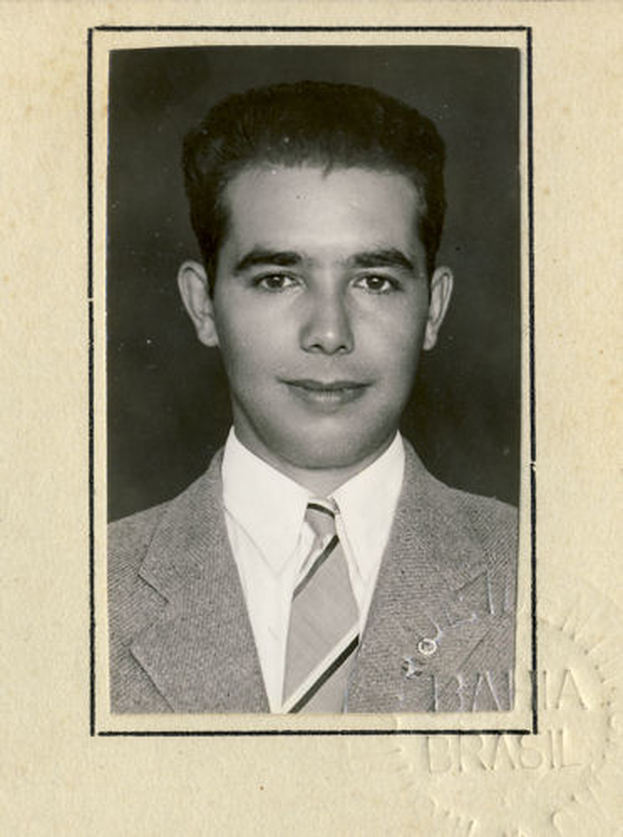




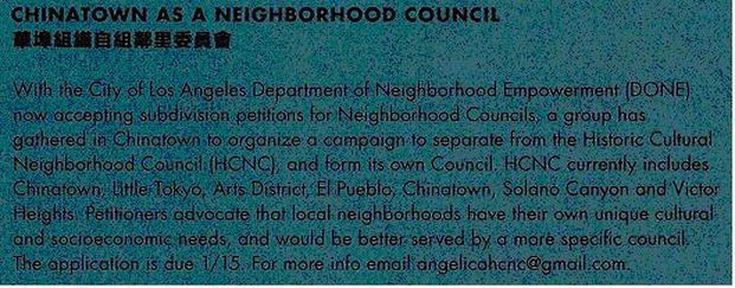







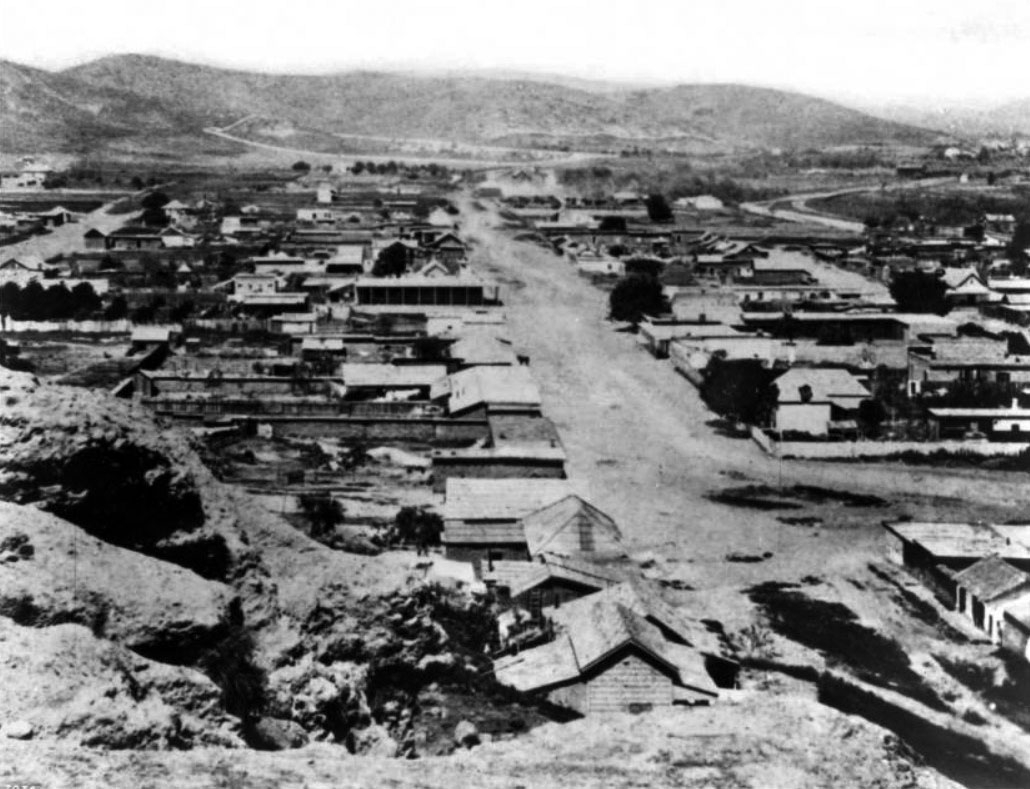


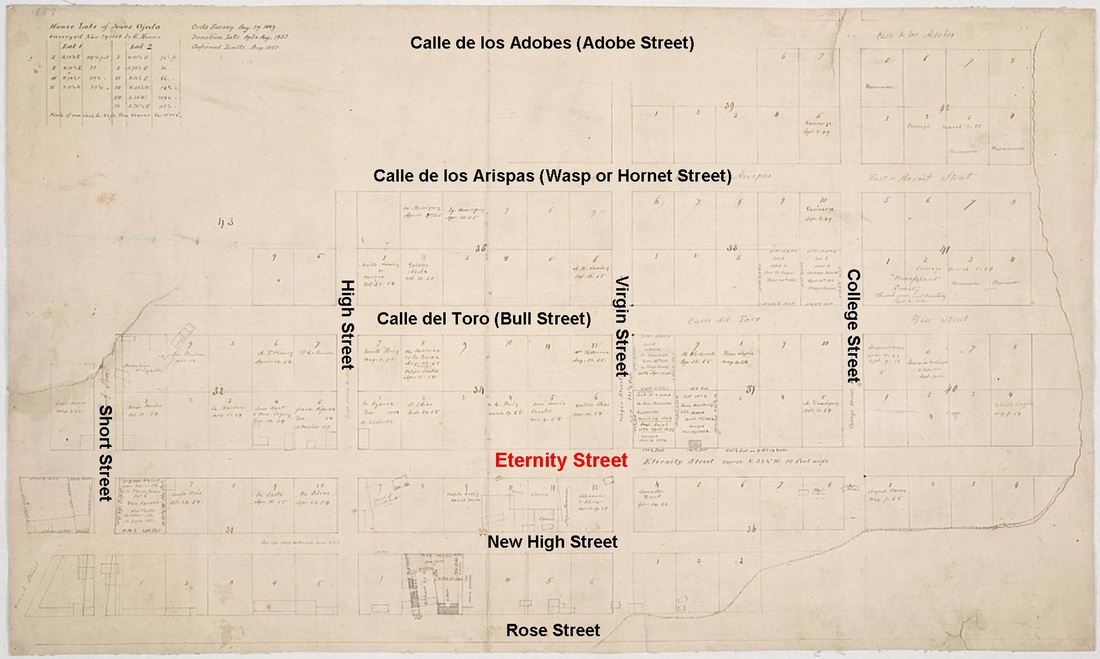
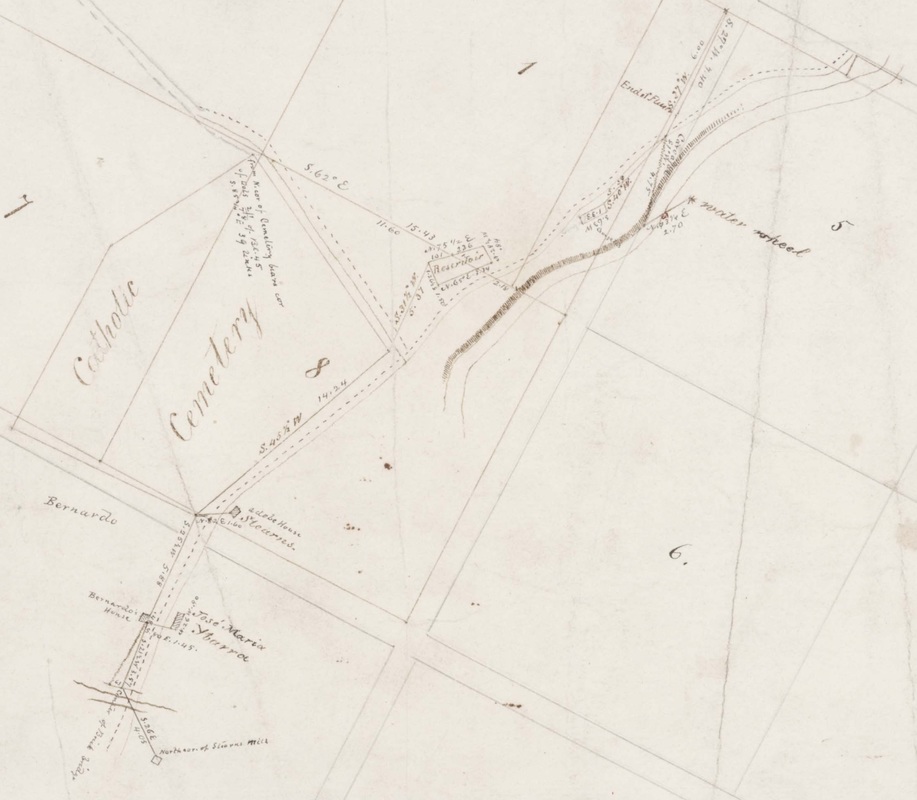
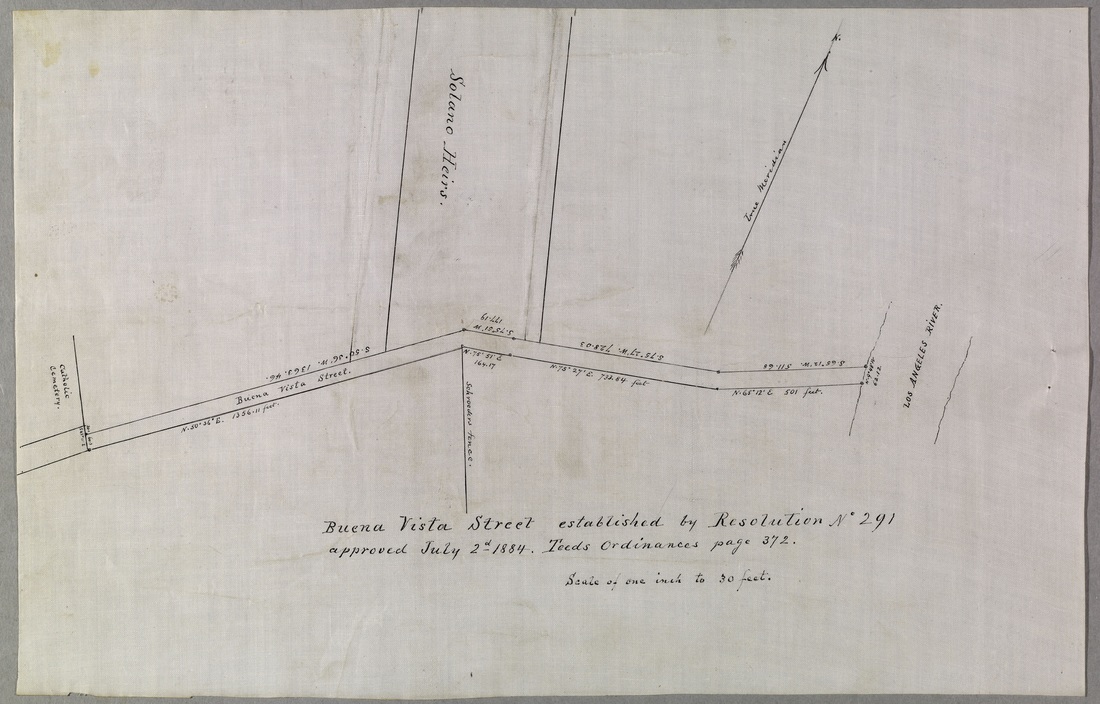


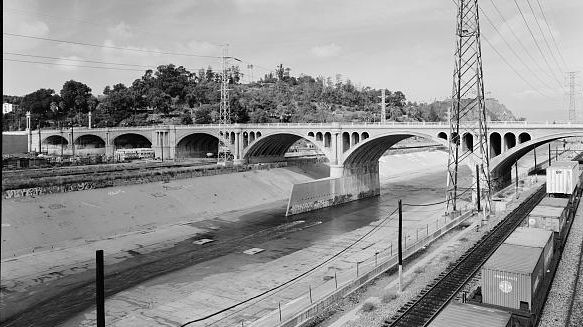
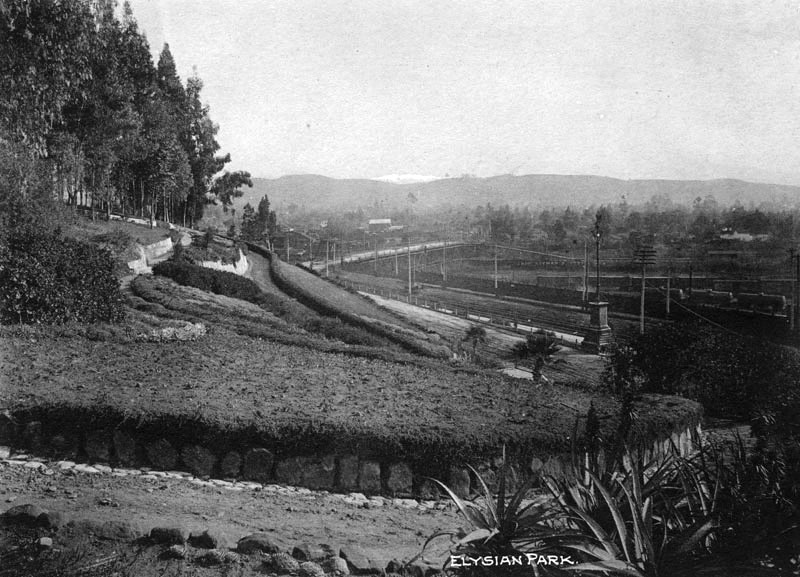



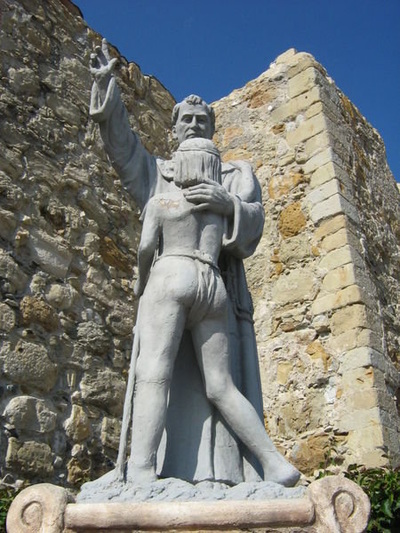

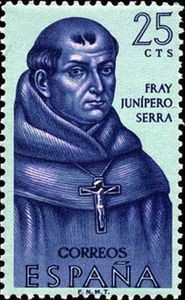


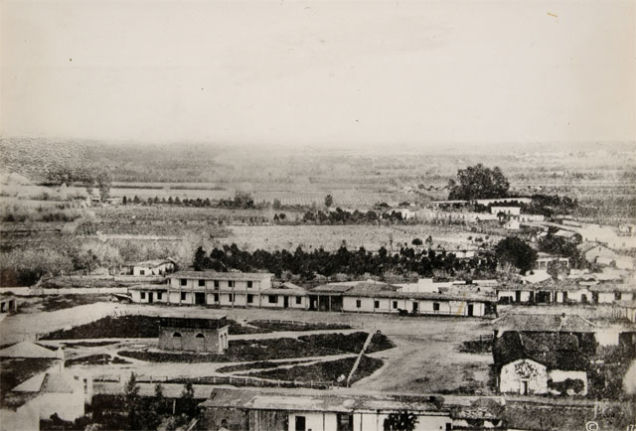
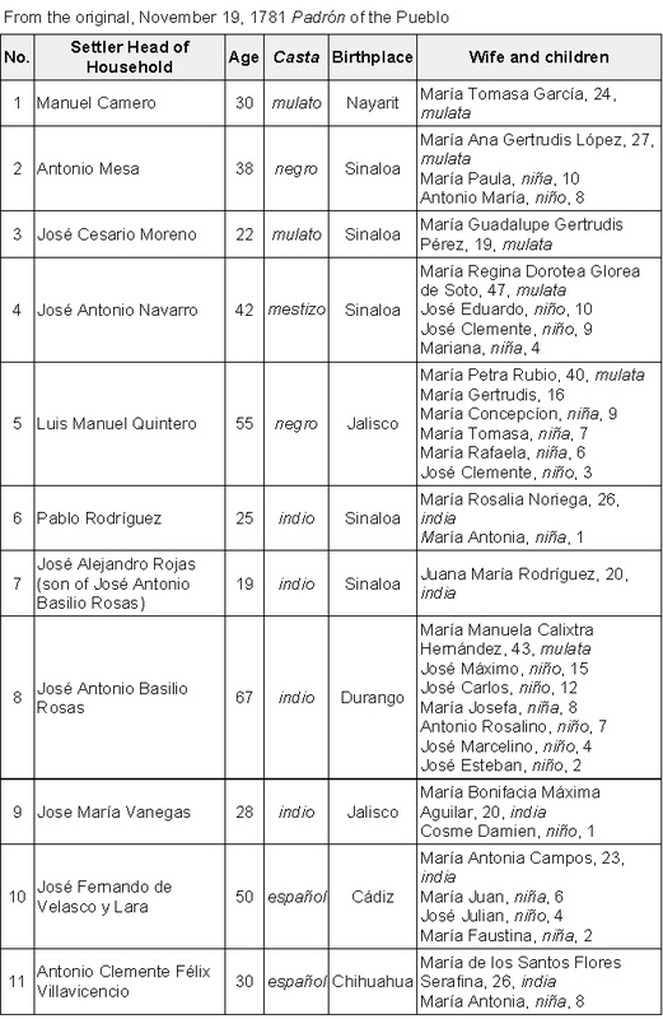

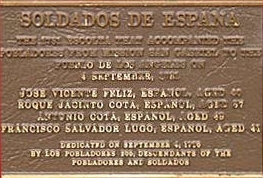
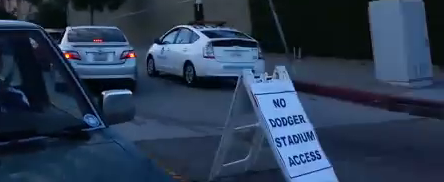

















 RSS Feed
RSS Feed
